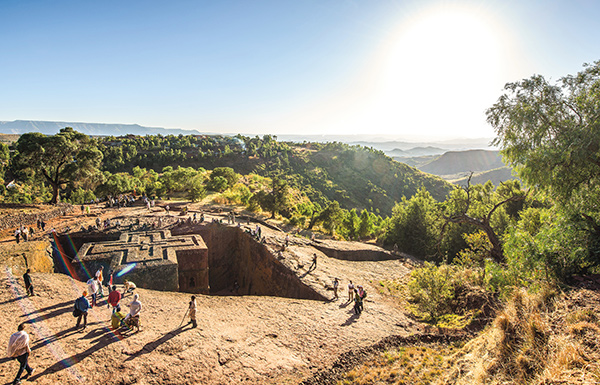The Rock-Hewn Churches of Lalibela
Sidebar to: Arabia or Africa: Where Is the Land of Sheba?

While many spectacular churches have been constructed above ground in Ethiopia, perhaps the country’s most famous churches are the ones carved out of stone. Located 150 miles south of Aksum, Lalibela is the best example of Ethiopia’s hypogean (rock-hewn) architectural tradition. With 11 rock-hewn churches, Lalibela is understandably a place of pilgrimage for those in the Ethiopian Orthodox Church.
The site Lalibela was originally called Roha, but it eventually took the name of King Lalibela, who ruled around 1200 C.E. as part of the Zagwe dynasty. King Lalibela is traditionally attributed as the builder of all the churches at the site.
Lalibela’s 11 churches are carved out of a hillside, which is made of soft reddish volcanic rock. The churches can be divided into two complexes—an eastern and a northern complex—that are connected through a series of carved passageways and naturally occurring wadis. Six churches are featured in the northern complex and four in the eastern complex. The 11th church—Beta Giyorgis (Church of St. George)—stands alone and is not part of either interconnecting complex.
Already a library member? Log in here.
Institution user? Log in with your IP address.

